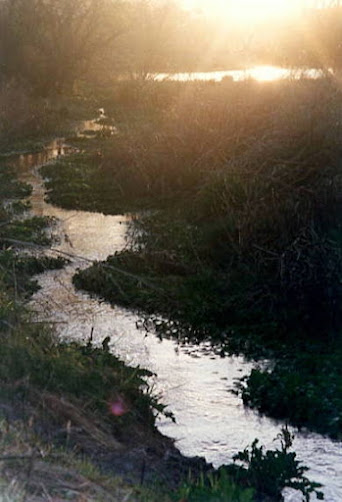The World of Woodpeckers, part 1
Woodpeckers are one of the most well-known bird species even for casual bird-watchers, perhaps because we hear them during our (and their) daily lives even if we don’t see them. Because most woodpecker species are also pretty fearless around humans, they are some of the easiest birds to attract to a backyard suet feeder, where it’s fun to observe them in action. The area around Arivaca is frequently visited by many different woodpecker species, and this fall and winter we’ve had Ladder-back Woodpeckers, Red-naped Sapsuckers, Gilded Flickers, Red-shafted and Yellow-shafted Northern Flickers visiting our birdbaths and feeders, along with our ever-present Gila Woodpeckers. Besides being beautiful to watch and listen to, woodpeckers have an amazing and interesting set of “super powers”!
 |
| Woodpecker "shock absorbers" |
Have you ever wondered how their bills can survive all that
hammering too? The chisel-like shape and stoutness of their bills allows them
to bore into almost any kind of wood, but they are especially attracted to
soft, decaying tree trunks that insects have made a home in, and that is easy to drill
into. They're pretty smart about it too! The video below shows a Northern Flicker drilling out the knot hole in the front of a plywood Barn Owl nestbox, which I am quite sure any Barn Owl would not approve of...
Their strong bill also enables them to do some pretty loud drumming
too. Many scientists believe that since they don’t have a song to sing,
drumming on a surface that resonates well, such as a dying tree, stop sign,
chimney, metal flashing, etc. may be their best way to establish their territory and/or attract a mate. In urban areas where houses are close together, drumming
on wood siding can produce a “loudspeaker” effect, with the nearby house amplifying the sound to carry for
blocks. Drumming done on the top of your metal chimney can send sound down into your woodstove or fireplace, and make it sound like a steel drum band has started up! Frequently, woodpeckers will experiment with multiple places on a house, telephone pole, etc. to find the best drumming location before they choose the one that carries sound the farthest. One
Northern Flicker in Wyoming could be heard drumming on an abandoned tractor
from a half-mile away! Click on this link to see and hear a Northern Flicker drumming on a highway guardrail
 |
| Female Gilded Flicker |
Two other remarkable adaptations that woodpeckers have to keep the wood dust they make from causing problems for them is a translucent eyelid called a nictating membrane that they can draw over their eyeballs yet still see, and bristly feathers located around their nostrils like a filter.
Have you ever wondered how they get those insects out of the holes they drill? This one is kind of freaky: Many woodpeckers have a spear-like tongue that is covered with barbs so they can stab their insect prey and easily bring it back into their bill. Yowza!
 |
| Female Pileated Woodpecker |
 |
| Male Downy Woodpecker |
Species that feed from crevices and surfaces of trees, such as the Downy Woodpecker, usually have longer tongues with bristles concentrated at the tip to "sweep" insects into their bill.
 |
| How a woodpecker's tongue is attached to their skull |
AND the reason that many woodpecker species can extend their tongue deep into the wood or ground is because they have a groove in their head between the skull and skin, so that their long tongue can curl around the back of their head and be stored in that groove when not in use. For example, Red-bellied woodpeckers have a tongue extending up to three times the length of their bill. Holy cow!
AND there's more!
Have you ever wondered how a woodpecker's feet can manage to hang on to a tree trunk at the same time that it's bill is hammering away? Their toes and tail feathers combine to make this an easy feat for them.
Unlike most songbirds, who have three forward-facing toes and one backward-facing toe, most woodpeckers have two toes facing forward and two facing back, which is called a "zygodactyl" foot. Because their first and fourth toes are the ones facing back and their second and third face forward, their feet are most excellent for grasping the limbs and trunks of trees. In addition, their claws, feet, and short legs are very strong, allowing them to easily hop up and around tree trunks and limbs all day long.
Woodpecker tail feathers are different than most other birds also. They are especially-stiff because of their cross-sectional geometry, with sharply pointed tips, which makes them function as a prop against the force of their bill hammering away at the trees.
The video below illustrates the way that this "super-grip" enables them to also preen and groom their feathers while clinging to a tree trunk, and can even hold on with one foot while scratching an itch!
Next month's blog will feature amazing facts about woodpecker nesting behavior, nest construction, and more!
- Ladder-backed Woodpecker photo by Emily Bishton
- Woodpecker "shock absorber" drawing by Lizzie Harper
- Northern Flicker at Barn Owl nestbox video by William W.
- Female Gilded Flicker photo by Emily Bishton
- Female Pileated Woodpecker by Shenandoah National Park. Creative Commons Attribution 2.0 Generic license
- Male Downy Woodpecker by WolfgangWander, GNU Free Documentation License
- Woodpecker tongue drawing by Tailandfur.com
- Male Yellow-shafted Flicker video by Emily Bishton



